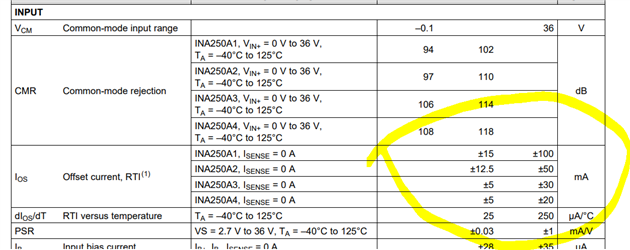Other Parts Discussed in Thread: INA190
Wondering if the INA250 would be a good choice for an application of measuring the quiescent current (Idq) draw of an LDMOS PA.
Would prefer a device with an integrated resistor, but could use something like the INA190 if more appropriate for my application.
Current Sense Amp. Requirements
Current Sense Placement: High-Side
Common Mode Voltage: 28V
Current Range measured: 20mA – 200mA
Accuracy: 0.5mA
Current measurement direction: uni-directional
Sensor output: Fed back to AUX ADC (Is placement distance from sensor output to ADC critical? Distance in this case could be up to 100mm or more)
12-Bit Aux ADC input range: 0 - 3.3V
I noticed that when I put in the parameters into the Current sense amplifier error analysis INA250: https://www.ti.com/product/INA250?dcmp=dsproject&hqs=pf
The Total Error % is > 100% for much of the Sensed Range
Sensed Current range: 0.02 - 0.20 A
Supply Voltage: 4.5V
Common-Mode voltage 28V
Also for the INA250, or if another part is recommended, which Gain version of the part would be recommended for feeding a 12-bit ADC with a input range of 0 - 3.3V?
Thanks,
Mike


